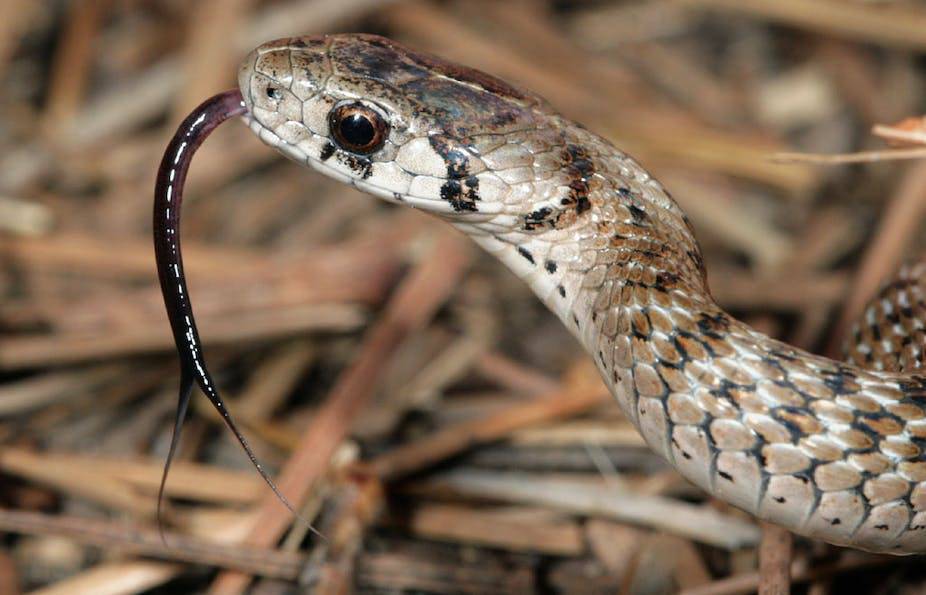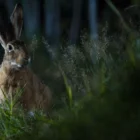Why do snakes wiggle their head?

Snakes, intriguing creatures renowned for their unique movement and behaviors, often exhibit a distinctive action known as head wiggling, a behavior that has intrigued researchers and enthusiasts for years.
The Dance of Perception: Sensory Marvels of Snake Heads
Unlike mammals, snakes lack external ears, yet their heads are a symphony of sensory organs. Heat-sensitive pits, specialized scales, and flickering tongues—each element contributes to a sensory panorama that enables snakes to navigate their surroundings with unparalleled precision.
Sight Beyond Sight: The Role of Vision in Head Wiggling
Contrary to popular belief, snakes are not blind and the eyes of a snake are not merely orbs within the skull, but are rather sophisticated optical instruments designed for a life of predation and survival. Unlike mammals, snakes lack the luxury of moving their eyes within their sockets.
Instead, their eyes are fixed, providing a sharp and unobstructed view of their surroundings. The head wiggling observed in many snake species is a compensatory mechanism—a dance that allows them to explore their environment and enhance their field of view.
The head wiggling observed in many snake species is, in fact, a visual reconnaissance strategy. The stereoscopic effect created by the lateral movement of the head affords snakes a three-dimensional perception of the world, aiding in the tracking of prey, navigating complex terrains, and identifying potential threats.
The Olfactory Orchestra: Scent Sampling through Head Movement
A snake’s tongue is a dynamic instrument of olfactory exploration. As the serpent extends its tongue into the air, it captures scent particles, which are then drawn back into the specialized vomeronasal organ, also known as Jacobson’s organ, located in the roof of the mouth. This process allows the snake to analyze a diverse array of chemical cues present in its environment.
The synchronized movement of the snake’s head amplifies the olfactory experience. As the tongue flicks in and out, the head subtly sways from side to side, creating a panoramic sweep that expands the scent canvas. This rhythmic head movement allows the snake to sample a larger volume of air, enhancing its ability to detect and analyze scent trails.
Vibrations in the Air: Auditory Acuity of Snakes
In the realm of snakes, silence is not merely a lack of noise but a crucial aspect of their hunting strategy. Snakes are adept at moving silently, an attribute that aids both in ambushing prey and avoiding detection by potential predators. The absence of external ears, however, might lead one to assume that snakes are deaf. On the contrary, they have evolved a unique auditory system that relies on vibrations.
The wiggling motion of a snake’s head is not a mere visual display—it is a finely tuned mechanism for detecting subtle vibrations in the air. This auditory acuity is particularly pronounced in species that frequent environments where sound waves may be dampened, such as tall grass, underbrush, or the dense foliage of forests. The wiggling motion allows snakes to capture more auditory information by effectively scanning their surroundings.
The auditory acuity facilitated by head wiggling is not solely about detecting the presence of prey; it also contributes to the precision of a snake’s strike. By accurately gauging the distance and direction of the target through auditory cues, a snake can time its strike with unparalleled precision. This precision is crucial for conserving energy, as a missed strike could mean an unsuccessful hunt and an energy expenditure that might not be easily replenished.
Communication in the Serpent Symphony
The head wiggling of snakes is not solely a solitary affair; it is also a form of communication. Among certain snake species, head movements are part of a nuanced language that conveys messages to conspecifics.
For many snake species, the intricate choreography of courtship unfolds through a series of subtle yet deliberate head movements. Male snakes, in their pursuit to attract a mate, engage in mesmerizing displays that involve rhythmic head wiggling. This dance is often accompanied by body undulations, tongue flicks, and even color changes in certain species. The female, attuned to these visual cues, interprets the elaborate performance as a prelude to potential mating.
The head wiggling also serves as a territorial declaration, a silent but potent way of saying, “This space is mine.” In instances where two snakes encounter each other, especially during the breeding season, head movements escalate into a nuanced dance of dominance and submission. The intricacies of these encounters are a testament to the social structures and hierarchies that persist within snake populations.










